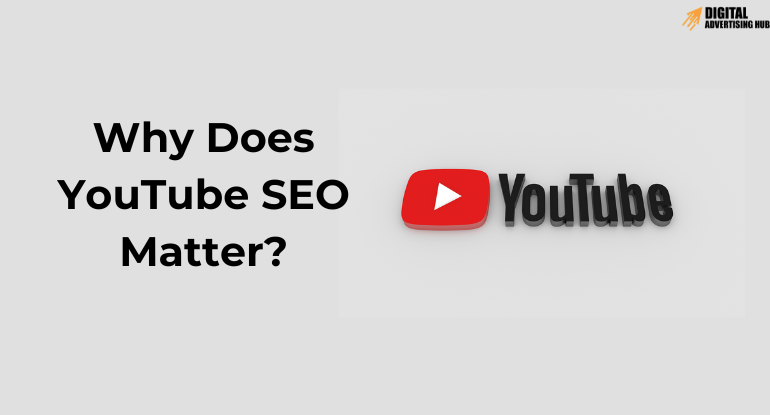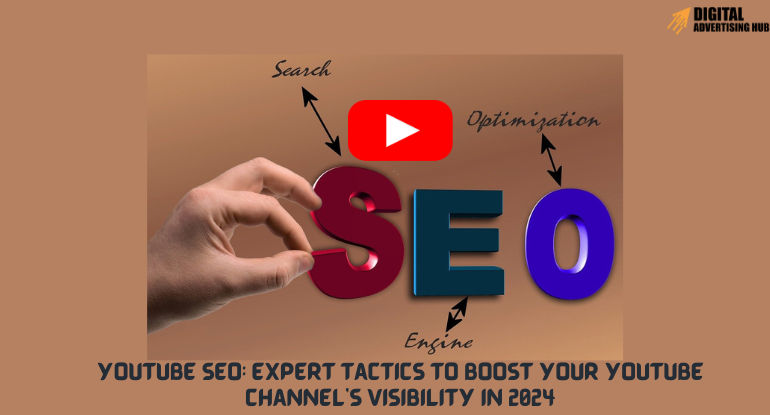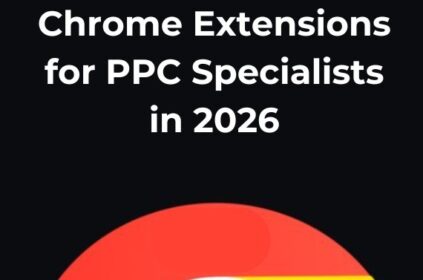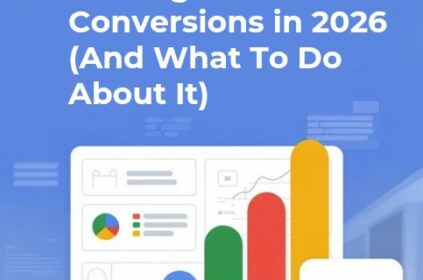In our previous post, “Facebook SEO: 15 Proven Strategies for Better Visibility in 2024,” we explored the power of search engine optimization for maximizing your Facebook presence. But social media is just one piece of the online puzzle. For video content creators, YouTube represents a vast platform with immense potential.
However, the sheer volume of content creators on YouTube demands a strategic approach to reach your target audience. Did you know that YouTube Shorts has 2 billion monthly active users?
This is where YouTube SEO (Search Engine Optimization) steps in. Effective SEO optimizes your videos and channel for better search ranking, ensuring your content reaches the right viewers.
Imagine a potential viewer searching for makeup tutorials. Your expertly crafted video, packed with valuable tips and tricks, could be the perfect answer. But if YouTube’s search engine can’t find your video, that viewer might never discover your expertise.
This complete guide will equip you with the knowledge and actionable strategies to transform your channel into a discovery magnet through YouTube SEO. We’ll explore the power of keyword research, delve into optimizing video elements, and discuss strategies to foster audience engagement.
By implementing these expert tactics, you’ll be well on your way to YouTube SEO mastery, attracting a dedicated audience and achieving greater channel visibility.
Why Does YouTube SEO Matter?

The vast landscape of YouTube can feel daunting for aspiring creators. With countless videos vying for attention, how do you ensure your content gets discovered by the right audience? This is where YouTube SEO (Search Engine Optimization) comes in.
You’ve poured your heart and soul into creating a fantastic baking tutorial. It’s informative, engaging, and visually stunning. But if viewers searching for “baking tips” can’t find your video, all that effort goes unseen.
Here’s why YouTube SEO matters:
#1. Increased Visibility: Effective SEO optimizes your videos for YouTube’s search engine, making them more likely to appear in search results when viewers enter relevant keywords. This significantly increases the chances of your content being discovered by a wider audience organically.
#2. Targeted Reach: By strategically incorporating keywords, you can attract viewers actively searching for topics related to your content. This ensures you’re reaching people genuinely interested in what you have to offer.
#3. Organic Growth: Unlike paid advertising, SEO helps you achieve sustainable growth. When viewers discover your high-ranking content and find it valuable, they’re more likely to subscribe, like, and engage, fostering a loyal audience base.
#4. Builds Brand Awareness: As your SEO-optimized videos rank higher and gain traction, your channel’s visibility increases. This helps establish your brand within your niche and attract new viewers organically.
#5. Improved Credibility: Ranking well in YouTube search results can be perceived as a mark of credibility. Viewers often associate higher-ranking content with quality and relevance, giving your channel a competitive edge.
In essence, YouTube SEO empowers you to take control of your channel’s discoverability. By implementing effective SEO strategies, you can ensure your valuable content reaches the right audience, fosters organic growth, and positions your channel for long-term success on YouTube.
Keyword Research: The Cornerstone of YouTube SEO Success
Just like a sturdy foundation is essential for a building, effective YouTube SEO hinges on a strong keyword research strategy. Identifying the specific terms and phrases your target audience uses to search for videos related to your content is the cornerstone of discoverability.

Here’s a detailed breakdown on how to lay the groundwork for successful YouTube SEO through keyword research:
#1. Understanding Search Intent
Sure, identifying popular keywords with high search volume is tempting. However, successful SEO goes beyond just chasing those numbers. What truly matters is understanding the “search intent” behind those keywords. In simpler terms, what is the viewer’s goal when they type in a specific search term?
Here’s how to understand search intent:
1. Informational: Viewers are looking for answers to questions or seeking to learn about a particular topic. For example, someone searching for “best DSLR cameras for beginners” likely wants an educational video comparing different camera options.
2. Investigational: Viewers are researching a specific product or service and might be comparing options before making a decision. For instance, a search for “Sony A7 IV vs Canon R6 review” suggests the viewer is considering both cameras and wants an in-depth comparison.
3. Transactional: Viewers are ready to purchase and are actively searching for products or services. A keyword like “buy Sony A7 IV” indicates purchase intent.
Putting Search Intent into Practice:
Imagine you create baking tutorials. A search for “chocolate chip cookies” might have high volume but could indicate general recipe browsing. However, a search for “easy chocolate chip cookie recipe for beginners” reveals clear informational intent. Tailoring your video content to address this specific search intent (e.g., focusing on simple steps and clear visuals) increases the chances of viewers finding your video valuable and engaging with it.
#2. Keyword Research Tools: Equipping Yourself for Discovery
The good news? You don’t have to embark on keyword research alone. Several free and paid tools can help you identify relevant keywords for your YouTube content:
1. Google Keyword Planner (Free): A powerful tool from Google Ads, Keyword Planner allows you to discover search volume for specific keywords, see related keyword suggestions, and even gauge competition level. While primarily designed for search engine advertising, the insights from Keyword Planner can be incredibly valuable for YouTube SEO.
Using Google Keyword Planner:
Start by logging into your Google Ads account (it’s free to create one). Within Keyword Planner, navigate to the “Discover” tab and enter keywords related to your video content. For example, if you create baking tutorials, you might enter “chocolate chip cookies.”
Keyword Planner will display the average monthly search volume for that term and related keywords like “chocolate chip cookie dough,” “best chocolate chip cookie recipe,” and “vegan chocolate chip cookies.” You’ll also see an estimated competition level (low, medium, high) to help you gauge how difficult it might be to rank for a particular keyword.
2. YouTube Suggest (Free): A built-in feature within YouTube itself, YouTube Suggest offers valuable insights into popular search terms. Simply start typing your keyword into the YouTube search bar and see the suggested searches appear in a dropdown menu. These suggestions can reveal real user queries related to your topic and provide inspiration for video content.
Using YouTube Suggest:
Let’s revisit our baking tutorial example. Start typing “chocolate chip cookie recipe” into the YouTube search bar. The dropdown menu might suggest searches like “chocolate chip cookie recipe without brown sugar,” “healthy chocolate chip cookie recipe,” or “giant chocolate chip cookie recipe.” These suggestions can spark ideas for new video content that caters to specific audience needs.

By strategically using these free tools, you can gain valuable insights into the keywords your target audience uses and identify opportunities to create content that resonates with their search intent.
Remember, the goal is to find a balance between high search volume and manageable competition to maximize your chances of ranking well.
In the next section, we’ll explore how to leverage competitor analysis and strategically select keywords to further refine your YouTube SEO approach.
#3. Competitor Analysis: Learning from the Best in Your Niche
Now that you’ve unlocked the power of keyword research, let’s delve into competitor analysis. This valuable technique involves studying how established channels in your niche are utilizing keywords and optimizing their content for YouTube SEO.
By learning from their successes (and perhaps even their missteps), you can refine your own strategy and identify opportunities to stand out.
Here’s a breakdown on how to conduct effective competitor analysis for YouTube SEO:
1. Identify Your Competitors:
The first step is to create a list of established YouTube channels in your niche or content area. Think about the channels viewers might turn to for similar content as yours. Utilize YouTube search and explore suggestions to discover relevant channels.
2. Analyze Their Content:
Once you have a list of competitors, take a deep dive into their content. Here’s what to pay attention to:
i). Video Topics: What kind of content are they creating? Are there any themes or gaps in their content strategy that you can capitalize on?
ii). Keywords: What keywords are they targeting in their titles, descriptions, and tags? Use a tool like VidIQ or TubeBuddy (both offer free plans with limited features) to see the tags competitors are using for their videos.
iii). Video Optimization: How are they optimizing their video elements? Analyze their titles, descriptions, thumbnails, and use of closed captions.
iv). Engagement Metrics: Look at their view count, like-to-dislike ratio, and comment sections. These metrics can offer insights into how their content resonates with viewers.
Putting Competitor Analysis into Practice:
Let’s revisit our baking tutorial example. Imagine one of your competitors is a popular baking channel that primarily focuses on elaborate dessert recipes. Through competitor analysis, you might discover they haven’t created any content specifically geared towards beginner bakers.
This presents an opportunity for you! You can create a series of “easy baking tutorials for beginners,” targeting keywords like “simple chocolate chip cookies” or “baking with kids.”
3. Don’t Just Copy, Differentiate:
Remember, competitor analysis is not about copying what others are doing. It’s about identifying best practices and finding opportunities to differentiate your content. Perhaps you can offer a more engaging presentation style, a unique baking tip, or a focus on healthier recipe variations.
By strategically analyzing your competitors, you’ll gain valuable insights into how keywords are being used within your niche. This knowledge empowers you to create content that not only addresses audience search intent but also stands out from the crowd. In the next section, we’ll discuss how to select the right keywords for your YouTube SEO strategy.
4. Strategic Keyword Selection: Don’t just pick the most popular keywords. While high search volume is attractive, consider the competition level. Targeting a mix of high-intent, medium-volume keywords, and long-tail keywords (more specific keyword phrases) can help you find a sweet spot between reach and competition.
Optimizing Your Videos for Search: The Art of Appealing to Both Viewers and Algorithms
Having identified your target keywords through research and competitor analysis, it’s time to optimize your videos for search. This involves strategically incorporating those keywords into various video elements to signal their relevance to YouTube’s search algorithm and human viewers. Here’s a breakdown of key areas for video optimization:
#1. Craft Compelling Titles with Strategic Keywords (Under 60 Characters)
Your video title is the first impression viewers encounter in search results. Make it count! Here’s how to optimize titles for search:
1. Incorporate Your Target Keyword: Naturally integrate your primary keyword towards the beginning of the title.
2. Spark Curiosity and Entice Clicks: Go beyond just keywords. Craft a title that piques viewers’ interest and compels them to click.
3. Clarity and Conciseness: Keep your title concise (ideally under 60 characters) to ensure it’s fully displayed in search results.
Example:
Non-Optimized Title: “Baking Cookies”
Optimized Title: Easy Chocolate Chip Cookie Recipe in 5 Steps | Perfect for Beginners
#2. Write Informative Descriptions that Engage Viewers (Up to 5000 Characters)
Your video description provides valuable real estate to further optimize your content for search and engage viewers. Here’s what to include:
1. Elaborate on Your Keyword: Briefly reiterate your target keyword and related keywords within the description.
2. Provide a Clear Video Summary: Entice viewers by explaining what your video offers. Highlight key points or benefits viewers will gain from watching.
3. Include a Call to Action: Prompt viewers to like, comment, subscribe, or visit your website (within the first 120 characters for maximum visibility).
4. Consider Adding Timestamps: Break down your video content into sections with timestamps in the description for easy navigation.
#3. Strategically Utilize Tags (Up to 500 Characters)
Tags are keywords that help categorize your video and improve search discoverability. Here’s how to leverage tags effectively:
1. Mix of Broad and Specific Tags: Include a mix of broader keywords related to your niche and more specific tags relevant to your video content.
2. Don’t Stuff Keywords: Focus on using relevant tags, not keyword stuffing. Prioritize quality over quantity.
3. Research Competitor Tags (Free Tools Available): Utilize free tools like VidIQ or TubeBuddy to see what tags your competitors are using for similar content and incorporate relevant ones into your own strategy.
#4. Closed Captions and Subtitles: A Win-Win for SEO and Accessibility
Adding closed captions and subtitles to your videos offers several benefits:
1. Improved Search Ranking: YouTube’s algorithm can process closed captions and subtitles, potentially boosting your video’s ranking for relevant search terms.
2. Enhanced Accessibility: Captions and subtitles cater to viewers who are deaf or hard of hearing, expanding your audience reach.
3. Increased Engagement: Viewers who don’t speak the language of your video might still be able to follow along with captions enabled.
By incorporating closed captions and subtitles, you demonstrate inclusivity and potentially improve your video’s discoverability through search.
Remember tooptimize your video filename by including your target keyword.
Create high-quality, engaging thumbnails that grab attention in search results.
In the next section, we’ll explore strategies to optimize your YouTube channel itself to further enhance discoverability and attract a loyal audience.
Optimizing Your Channel for Discoverability: Building a Destination for Viewers
While optimizing individual videos is crucial, don’t neglect your YouTube channel as a whole. Think of your channel as a destination where viewers can explore your content, learn about your brand, and (hopefully) become loyal subscribers.
Here are key strategies to optimize your channel for discoverability and attract a dedicated audience:
#1. Craft a Compelling Channel Trailer (The Elevator Pitch of Your Channel)
Your channel trailer is a short video that automatically plays when viewers visit your channel. Consider it your elevator pitch – a captivating introduction that entices viewers to subscribe and explore your content. Here’s how to make your trailer impactful:
1. Highlight Your Value Proposition: Clearly communicate what your channel offers and why viewers should subscribe.
2. Showcase Your Personality and Style: Let your personality shine through! This helps viewers connect with you and builds a sense of community.
3. Call to Action: Prompt viewers to subscribe for more content and hit the notification bell to stay updated.
4. Keep it Short and Engaging: Aim for a trailer under one minute to maintain viewer attention.
#2. Organize Your Content with Playlists (Theming is Key)
Playlists are a fantastic way to curate your videos around specific themes or topics. Here’s how playlists can enhance discoverability:
1. Improved User Experience: Playlists make it easier for viewers to find related content and binge-watch your videos.
2. Boosted Watch Time: Playlists encourage viewers to continue watching related content after finishing one video.
3. Series and Topic Organization: Utilize playlists to organize ongoing video series or categorize content by topic (e.g., baking tutorials for beginners, healthy dessert recipes).
#3. Leverage End Screens & Cards to Promote Engagement and Channel Growth
End screens and cards appear at the end of your videos, offering valuable opportunities to promote further engagement and channel growth:
1. End Screens: These clickable elements appear at the very end of your video, allowing you to promote other relevant videos on your channel or encourage viewers to subscribe.
2. Cards: These small, clickable information cards appear throughout your video, allowing you to link to other videos, playlists, or even your website.
Strategic Use of End Screens & Cards:
1. Promote your most popular videos or new content series through end screens.
2. Use cards to link to relevant content within the same video or entice viewers to subscribe with a mid-roll subscription card.
#4. Channel Branding and Consistency: Building Recognition
Maintaining consistent branding across your channel elements (profile picture, banner image, thumbnails) fosters recognition and creates a professional presence.
By implementing these optimization strategies, you’ll transform your YouTube channel into a welcoming destination for viewers, encouraging them to subscribe, explore your content library, and become part of your online community. The next section delves into the power of audience engagement and its impact on YouTube SEO.
Engagement is Important: Strategies to Spark Meaningful Connections with Your Audience
While SEO plays a vital role in getting your videos discovered, true YouTube success hinges on audience engagement. By fostering meaningful connections with viewers, you can not only boost watch time and channel growth but also send positive signals to YouTube’s algorithm, potentially improving your search ranking.
Here are strategies to spark audience engagement and keep viewers coming back for more:
#1. Respond to Comments and Foster Discussions: Actively respond to comments, answer questions, and participate in discussions within your comment section. This demonstrates that you value your viewers and encourages further interaction.
#2. Host Q&A Sessions or Live Streams: Consider hosting live Q&A sessions or live streams to connect with your audience in real-time. This allows for a more interactive experience and fosters a sense of community.
#3. Encourage Video Feedback and Suggestions: Politely ask viewers for feedback and suggestions in your video outros or descriptions. Demonstrate that you value their input and use it to improve your content.
#4. Run Contests and Giveaways: Hosting occasional contests or giveaways can be a fun way to boost engagement and attract new viewers. Just ensure your contests comply with YouTube’s guidelines.
#5. Collaborate with Other YouTubers: Collaborating with creators in your niche can expand your audience reach and introduce your content to a new viewer base. Choose collaborators whose content aligns with yours and whose audience you’d like to engage with.
#6. Be Authentic and Engaging: Let your personality shine through in your videos. Enthusiasm and genuine connection with your topic are contagious!
#7. Post Consistently: Develop a consistent upload schedule to keep viewers engaged and coming back for more.
#8. Respond to Negative Feedback Gracefully: Even negative comments offer an opportunity to learn and improve. Respond professionally and address any concerns constructively.
By prioritizing audience engagement, you’ll cultivate a loyal following, establish yourself as a trusted voice in your niche, and send positive signals to YouTube’s algorithm. In the next section, we’ll explore how to leverage YouTube Analytics to measure your performance and refine your strategy for continuous improvement.
How to Utilize YouTube Analytics to Track Your Success

The journey to YouTube SEO mastery is an ongoing process. While implementing the strategies outlined above will set you on the right track, measuring your progress and understanding what resonates with your audience is crucial for continued success. This is where YouTube Analytics comes in – a powerful toolset that provides valuable insights into your channel’s performance.
Understanding Key Metrics:
YouTube Analytics offers a treasure trove of data, but focusing on these key metrics will provide a clear picture of your channel’s health and audience engagement:
#1. Views: The total number of times your videos have been viewed. This is a basic metric, but it can indicate overall content reach.
#2. Watch Time: The total amount of time viewers spend watching your videos. This metric is more valuable than views, as it reflects audience engagement.
#3. Audience Demographics: Gain insights into your audience’s age, gender, location, and even viewing devices. Understanding your audience demographics allows you to tailor your content accordingly.
#4. Engagement Metrics: Track key engagement metrics like likes, dislikes, comments, and shares. These metrics provide valuable feedback on how viewers are responding to your content.
#5. Traffic Sources: See where your views are coming from (search results, browse features, suggested videos, etc.) This information helps you understand how viewers are discovering your content and identify areas for improvement.
Leveraging Analytics for Continuous Improvement:
Don’t just collect data – use it to your advantage! Here’s how YouTube Analytics can fuel your YouTube SEO strategy:
#1. Identify High-Performing Content: Analyze which videos have the highest view counts, watch time, and audience engagement. This helps you understand what resonates with your audience and allows you to replicate successful elements in future content.
#2. Discover Audience Preferences: See which demographics are most engaged with your content. This can help you tailor your video topics and presentation style to cater to your core audience.
#3. Refine Your Optimization Strategy: Use analytics to see which keywords are driving the most traffic and which ones might need further optimization.
#4. Experiment and Adapt: The world of YouTube is constantly evolving. Use analytics to experiment with different content formats, upload schedules, and engagement strategies. See what works best for your channel and audience, and adapt your approach accordingly.
By consistently analyzing your YouTube Analytics data, you’ll gain a deeper understanding of your audience and what kind of content resonates most. This empowers you to refine your approach, create high-performing videos, and cultivate a loyal following.
Remember, YouTube SEO is a continuous journey, and successful creators leverage data and analytics to stay ahead of the curve.
Consider exploring advanced YouTube SEO techniques like optimizing your channel for mobile viewing and leveraging YouTube cards for merchandise promotion. Staying updated on YouTube’s algorithm changes and adapting your strategy accordingly is also key to maintaining discoverability and channel growth.
Top 10 Common YouTube SEO Mistakes and How to Avoid Them
Even the most enthusiastic creators can fall victim to YouTube SEO pitfalls. Here’s a breakdown of the top 10 mistakes to avoid and how to fix them:
#1. Neglecting Keyword Research: Imagine you have a fantastic bakery tutorial but no one searching for baking finds it. This happens when you skip keyword research.
Use free tools like Google Keyword Planner to discover keywords related to your video content. Consider search intent – are viewers looking for “how-to” videos, reviews, or baking tips for beginners? Target a mix of high-intent keywords with lower competition and long-tail keywords (more specific phrases) to improve discoverability.
#2. Keyword Stuffing: Cramming your titles, descriptions, and tags with keywords unnaturally can hurt your SEO and turn viewers away.
Strategically incorporate your target keywords throughout your video elements. Prioritize readability and focus on creating clear, informative titles and descriptions that accurately reflect your content. Study the 8 Common Keyword Stuffing Examples: Effective Ways of Spotting and Fixing Overused Keywords.
#3. Ignoring Video Titles and Descriptions: Think of your title and description as your video’s shop window. Uninformative titles and descriptions won’t entice viewers or signal relevance to YouTube’s algorithm.
Craft compelling titles (under 60 characters) that pique viewers’ interest and include your target keyword. Write informative descriptions that summarize your video content, highlight key points, and consider adding timestamps for easy navigation.
#4. Forgetting Closed Captions and Subtitles: These aren’t just for accessibility! YouTube’s algorithm can process closed captions, potentially boosting your ranking for relevant terms.
Utilize free or paid closed captioning tools to add captions and subtitles to your videos. This expands your audience reach to viewers who are deaf or hard of hearing, and might benefit from watching with captions enabled.
#5. Inconsistent Upload Schedule: Viewers crave consistency. Imagine a bakery that opens sporadically – viewers (and customers) might get frustrated.
Develop a realistic upload schedule and stick to it as much as possible. This builds anticipation and keeps your audience engaged, knowing when to expect new content.
#6. Failing to Promote Your Videos: Don’t just publish your video and hope for the best. You wouldn’t open a bakery without any signage, would you?
Promote your videos across your social media channels, collaborate with other YouTubers in your niche, and explore paid advertising options to reach a wider audience.
#7. Underestimating Thumbnails: Thumbnails are like tiny billboards for your video. A blurry, generic image might not entice viewers to click.
Invest time in creating high-quality, engaging thumbnails that accurately represent your video content. Use clear visuals, relevant text, and a consistent style for your channel’s branding.
#8. Not Responding to Comments: Ignoring comments shows a lack of engagement with your audience. Imagine a bakery with a rude salesperson – customers wouldn’t return, would they?
Respond to comments, answer questions, and participate in discussions to foster a sense of community. This builds trust and loyalty with your viewers, encouraging them to return for more.
#9. Neglecting YouTube Analytics: Data is your friend! Imagine a bakery with no sales figures – how would they know what’s working?
Utilize YouTube Analytics to track your performance (views, watch time, demographics). Analyze what resonates with your audience and identify areas for improvement in your SEO strategy.
#10. Giving Up Too Soon: Building a successful YouTube channel takes time and dedication. Don’t get discouraged if you don’t see results overnight. Imagine opening a bakery and expecting a line out the door on day one.
Keep creating high-quality content, refine your strategy based on data and audience feedback, and stay passionate about your niche. Consistency and dedication are key ingredients for YouTube SEO success.
How Does YouTube Advertising Impact SEO?
While YouTube SEO focuses on organic search ranking, YouTube advertising can play a complementary role in your overall content strategy. Here’s how:
#1. Increased Visibility: Running targeted ads can place your video content in front of a wider audience who might not have discovered it organically. This can lead to increased views, watch time, and potentially improved search ranking due to positive user engagement signals.
#2. Brand Awareness: YouTube ads can help build brand awareness for your channel, especially if you target viewers interested in your niche. As viewers become familiar with your brand through ads, they might be more likely to search for your channel organically in the future.
#3. Targeting Specific Audiences: Unlike organic search, where you rely on people finding your content through keywords, YouTube ads allow you to target specific demographics, interests, and behaviors. This ensures your ads reach viewers most likely to be interested in your content.
#4. A/B Testing Thumbnails and Titles: Running ad campaigns allows you to test different titles, thumbnails, and calls to action. By analyzing which elements generate the most clicks and engagement, you can gain valuable insights to optimize your organic content for better SEO performance.
Running Ads for Beginners: A Detailed Breakdown
YouTube advertising leverages Google Ads, so you’ll need a Google Ads account to get started. Here’s a step-by-step guide to walk you through the process:
#1. Create a Google Ads Account:
Head over to https://ads.google.com/home/how-it-works/ and click the blue “Start now” button.
You’ll be prompted to sign in with your Google account. If you don’t have one, you can create a new account for free.
#2. Start a New Campaign:
Once logged in, you’ll see the Google Ads dashboard. Click the blue “+” button and select “New campaign.”
Google Ads offers various campaign goals. Since you’re a beginner, you might choose a goal like “Brand Awareness” to get your channel name out there, or “Website Traffic” to drive viewers to your website.
#3. Campaign Settings:
After selecting your campaign goal, Google Ads will guide you through setting up your campaign. You’ll be prompted to:
Name your campaign: Choose a clear and descriptive name that reflects your video ad’s purpose.
Campaign settings: Here you can define your campaign type (select “Video” for YouTube ads). You’ll also set your campaign budget (how much you’re willing to spend per day or total) and bidding strategy (how much you’re willing to pay for each view or click).
#4. Targeting and Audience:
This is where you define who will see your ads. Google Ads offers extensive targeting options:
Demographics: Target viewers based on age, gender, location, and household income.
Interests: Reach viewers interested in specific topics related to your video content.
Behaviors: Target viewers based on their online browsing habits and video viewing history.
The more specific you are with your targeting, the more likely your ads are to reach viewers genuinely interested in your content.
#5. Ad Creation:
Now it’s time to create your video ad! You’ll upload the video you want to promote (ensure it meets YouTube’s ad format specifications).
Craft a compelling headline (around 30 characters) and a short description (around 90 characters) to grab viewers’ attention and entice them to click on your ad.
You can also add a call to action text (e.g., “Watch Now” or “Learn More”) to tell viewers what you want them to do after seeing your ad.
#6. Targeting and Bidding):
Here you can refine your targeting options further by selecting specific video channels or websites where you want your ad to appear.
You’ll also choose your bidding strategy. A common option for beginners is “cost-per-view” (CPV), where you pay each time someone watches your ad for at least 30 seconds (or interacts with it in other ways).
#7. Launch and Monitor:
Once everything is set up, review your campaign settings and hit “Launch campaign” to make your ad live on YouTube.
Don’t just launch and forget it! Monitor your campaign performance through Google Ads. Track metrics like impressions (how many times your ad was shown), clicks, views, and cost-per-view.
Analyze the data to see what’s working and what’s not. Are certain demographics responding better to your ads? Is one headline or thumbnail generating more clicks? Use these insights to refine your targeting, bidding strategy, and ad creative for better results.
This is just a starting point. YouTube advertising offers a wide range of features and functionalities. As you gain experience, you can explore advanced options like ad scheduling, remarketing campaigns (targeting viewers who have previously interacted with your channel), and conversion tracking (measuring how your ads lead to specific actions on your website).
Additional Resources:
- Google Ads Help Center: https://ads.google.com/home/
- Create Your First Video Ad Campaign: https://www.youtube.com/watch?v=AuKxAioEHj0
- YouTube Advertising – How to create high performing YouTube Ad Campaigns
- YouTube advertising Guide: How To Promote Your Business Using YouTube Ads
By effectively combining YouTube SEO strategies with targeted advertising, you can significantly increase your content’s discoverability and reach a wider audience. Remember, creating high-quality content remains the foundation, and both SEO and advertising work best when used strategically to complement each other.
YouTube SEO FAQs
Here are answers to some frequently asked questions about YouTube SEO:
#I. How Can I Use YouTube SEO for Free?
The beauty of YouTube SEO is that many effective strategies can be implemented for free. Here’s how to get started without spending a dime:
1. Keyword Research: Utilize free tools like Google Keyword Planner and YouTube’s search bar suggestions to identify relevant keywords.
2. Competitor Analysis: Study how established channels in your niche are optimizing their content and draw inspiration for your own strategy.
3. Optimize Your Videos: Craft compelling titles and descriptions that incorporate your target keywords. Utilize free closed captioning tools and focus on creating high-quality thumbnails.
4. Engage with Your Audience: Respond to comments, participate in discussions, and build a community around your channel.
5. Track Your Performance: Leverage YouTube Analytics (free tool) to understand your audience and identify areas for improvement in your SEO strategy.
#2. How Do I Increase SEO on My YouTube Channel?
Here are some key strategies to boost your YouTube channel’s SEO:
1. Consistent Uploads: Develop a regular upload schedule to keep viewers engaged and coming back for more.
2. High-Quality Content: Focus on creating informative, engaging videos that provide value to your target audience.
3. Keyword Optimization: Research relevant keywords and strategically incorporate them into your titles, descriptions, tags, and closed captions.
4. Promote Your Videos: Share your content across social media platforms, collaborate with other creators, and explore paid advertising options (if budget allows).
5. Respond to Comments and Feedback: Actively engage with your audience, answer questions, and address concerns to foster a sense of community.
6. Stay Up-to-Date: Keep an eye on YouTube algorithm updates and adapt your SEO strategy accordingly.
#3. What is the free AI SEO tool for Youtube?
While there’s no single “free AI SEO tool” specifically designed for YouTube, some free SEO tools can offer valuable insights for YouTube content creators. Here are a couple of options:
1. VidIQ (Free Plan): This free plan provides basic keyword research suggestions, competitor analysis data, and limited video optimization tracking.
2. TubeBuddy (Free Plan): Similar to VidIQ, the free plan of TubeBuddy offers some keyword research suggestions, competitor tag analysis, and limited video optimization features.
Free SEO tools often come with limitations. Consider these options as starting points, but focus on building a strong foundation through high-quality content and consistent audience engagement for long-term YouTube SEO success.
By following the strategies outlined in this guide and remaining passionate about your content creation journey, you’ll be well on your way to establishing a thriving YouTube channel and achieving your audience growth goals. Now go forth, create, and leverage the power of YouTube SEO to share your voice with the world!
Conclusion
The vast landscape of YouTube can feel daunting, but with the right strategies, your content has the potential to reach a dedicated and engaged audience. By harnessing the power of keyword research, optimizing your videos and channel for discoverability, and fostering meaningful connections with viewers, you’ve equipped yourself with the tools to navigate YouTube SEO and achieve channel growth.
SEO is an Ongoing Process: Continuously refine your approach based on audience response and YouTube algorithm updates.
Quality Content is King: Prioritize creating high-quality, informative, and engaging video content that resonates with your target audience.
Embrace Experimentation: Don’t be afraid to experiment with different formats, styles, and upload schedules to see what works best for your channel.
The Power of Community: Build a community around your channel by responding to comments, hosting live streams, and collaborating with other creators.
By implementing the strategies outlined in this guide and remaining passionate about your content creation journey, you’ll be well on your way to unlocking the full potential of YouTube SEO and establishing your channel as a destination for viewers seeking valuable and engaging content.
Now go forth and create! The world of YouTube awaits your unique voice and expertise.










